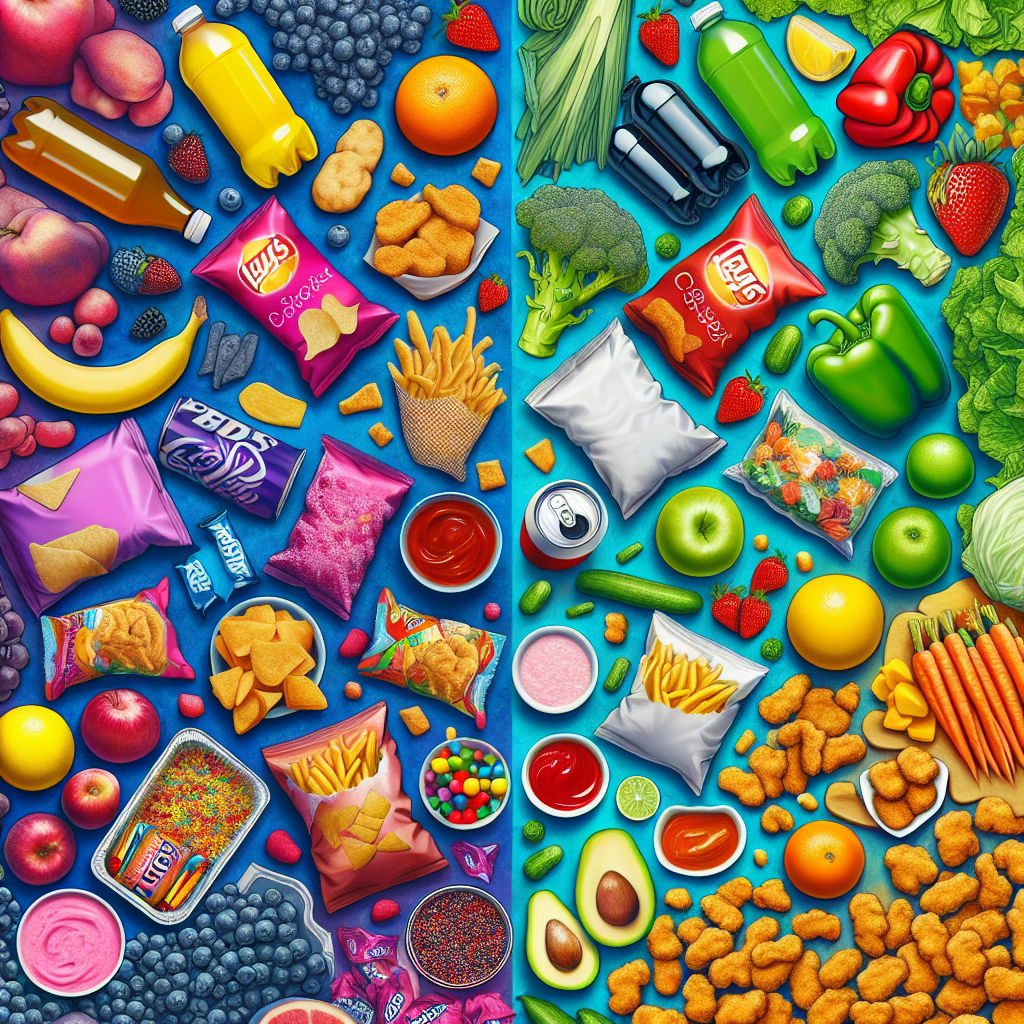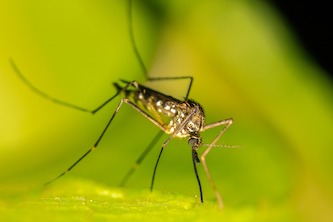Ultra-processed foods (UPFs) are becoming a big worry for nutrition experts because they are so common and may be bad for our health. These foods include things like chicken nuggets, packaged snacks, and sugary drinks, and they make up more than half of the calories eaten in the UK, especially by kids and people in lower-income areas. UPFs are made with lots of industrial processing and contain many ingredients that are hard to recognize. They usually have high levels of fat, sugar, and salt, which is why many health advocates are focusing on them. However, scientists are still debating how exactly these foods affect our health.
Recent studies have shown a link between eating UPFs and health problems like obesity, heart disease, and some types of cancer. For example, a large study in the United States found that people who ate the most UPFs had a 10% higher chance of dying early, even when considering their weight and overall diet. But it’s tough to prove that UPFs directly cause these health issues. While many studies suggest a connection, they don’t clearly show that the way these foods are processed is the main reason for the health problems.
To really understand how UPFs affect health, researchers think we need to do detailed studies comparing people who eat a lot of UPFs with those who eat very few. Both groups would need to have similar calorie and nutrient intake, which makes these studies complicated and expensive to conduct. Plus, getting funding for this kind of research can be tricky because researchers might have biases about what they want to find out.
Another issue in the UPF debate is figuring out what exactly counts as an ultra-processed food. UPFs usually have more than five ingredients, many of which you wouldn’t find in a regular kitchen. This broad definition raises questions about whether all UPFs should be treated the same, since some might affect health differently than others. For instance, sugary cereals and low-fat yogurts are both UPFs, but they can have very different nutritional values and health effects. The conversation around UPFs also brings up the problem of food accessibility, as healthier options can often be more expensive, making it hard for people on a budget to avoid UPFs. Overall, while there isn’t clear evidence that UPFs are harmful, nutritionists recommend eating a balanced diet full of whole foods, fruits, and vegetables.
Original news source: Why we might never know the truth about ultra-processed foods (BBC)
🎧 Listen:
Slow
Normal
Fast
📖 Vocabulary:
| 1 | ultra-processed | Made with a lot of processing and artificial ingredients |
| 2 | nutrition | The science of how food affects health |
| 3 | advocates | People who support or promote a cause |
| 4 | obesity | A condition of being very overweight |
| 5 | funding | Money provided for a specific purpose, like research |
| 6 | biases | Personal opinions that affect judgment |
| 7 | accessibility | The ease of getting or using something |
| 8 | nutrients | Substances in food that help the body grow and stay healthy |
| 9 | industrial | Related to factories or large-scale production |
| 10 | calories | Units of energy in food |
| 11 | intake | The amount of food or drink consumed |
| 12 | complicated | Difficult and having many parts |
| 13 | evidence | Information that shows whether something is true |
| 14 | balanced | Having different parts in the right amounts |
| 15 | researchers | People who study a subject to learn more about it |
Group or Classroom Activities
Warm-up Activities:
– CHARADES
Instructions: Divide the class into small groups. Each group takes turns acting out different ultra-processed foods (e.g., chicken nuggets, sugary drinks) without speaking while the other groups guess the food. This activity helps build vocabulary related to nutrition and food items.
– OPINION POLL
Instructions: Create a series of statements about ultra-processed foods (e.g., “Ultra-processed foods should be banned,” “They are too convenient to avoid”). Students walk around the room and ask their classmates for their opinions, marking “agree,” “disagree,” or “neutral” on a chart. After polling, students can share the results and discuss their findings.
– MIND MAP
Instructions: In pairs, students create a mind map on a large sheet of paper about ultra-processed foods. They start with “Ultra-Processed Foods” in the center and branch out with related concepts such as health effects, examples, and alternatives. This helps reinforce vocabulary and concepts from the article.
– HEADLINE CREATION
Instructions: Students work in small groups to come up with catchy headlines for the article on ultra-processed foods. They should aim to capture the essence of the article in a few words. Afterward, groups can share their headlines with the class, and a discussion can follow on which headlines are most effective and why.
– PROS AND CONS
Instructions: In small groups, students list the pros and cons of ultra-processed foods based on the information in the article. They should think critically about both sides, considering health concerns, convenience, and accessibility. Afterward, each group can present their lists and engage in a class discussion on their findings.
🤔 Comprehension Questions:
1. What are some examples of ultra-processed foods mentioned in the article?
2. Why are nutrition experts concerned about the high consumption of ultra-processed foods, especially among kids?
3. What health problems have been linked to the consumption of ultra-processed foods according to recent studies?
4. How did the large study in the United States measure the risk of dying early related to ultra-processed foods?
5. What challenges do researchers face when trying to study the effects of ultra-processed foods on health?
6. Why is it difficult to define what counts as an ultra-processed food?
7. How do sugary cereals and low-fat yogurts differ despite both being classified as ultra-processed foods?
8. What recommendations do nutritionists make regarding diet in relation to ultra-processed foods?
Go to answers ⇩
🎧✍️ Listen and Fill in the Gaps:
Ultra-processed foods (UPFs) are becoming a big worry for nutrition (1)______ because they are so common and may be bad for our health. These foods (2)______ things like chicken nuggets, (3)______ snacks, and sugary drinks, and they make up more than half of the (4)______ eaten in the UK, especially by kids and people in lower-income areas. UPFs are made with lots of industrial processing and contain many ingredients that are hard to recognize. They usually have high levels of fat, sugar, and salt, which is why many health advocates are focusing on them. However, scientists are still debating how exactly these foods affect our health.
Recent studies have shown a link between eating UPFs and health problems like obesity, heart disease, and some types of (5)______. For example, a large study in the (6)______ States found that people who ate the most UPFs had a 10% higher chance of dying early, even when (7)______ their weight and overall diet. But it’s tough to (8)______ that UPFs directly cause these health issues. While many studies suggest a connection, they don’t clearly show that the way these foods are processed is the main reason for the health problems.
To really understand how UPFs affect health, (9)______ think we need to do detailed studies (10)______ people who eat a lot of UPFs with those who eat very few. Both groups would need to have similar calorie and nutrient intake, which (11)______ these studies complicated and expensive to conduct. Plus, getting funding for this kind of research can be tricky because researchers might have biases about what they want to find out.
Another issue in the UPF debate is figuring out what exactly (12)______ as an ultra-processed food. UPFs usually have more than five ingredients, many of which you wouldn’t find in a regular kitchen. This broad definition raises questions about whether all UPFs should be treated the same, since some might affect health differently than (13)______. For instance, sugary cereals and low-fat yogurts are both UPFs, but they can have very different nutritional values and health effects. The conversation around UPFs also brings up the problem of food accessibility, as (14)______ options can often be more expensive, (15)______ it hard for people on a budget to avoid UPFs. Overall, while there isn’t clear evidence that UPFs are harmful, nutritionists recommend eating a balanced diet full of whole foods, (16)______, and vegetables.
Go to answers ⇩
💬 Discussion Questions:
Students can ask a partner these questions, or discuss them as a group.
1. What is your favorite type of food, and do you think it is healthy or unhealthy?
2. How would you feel if you had to give up all ultra-processed foods for a month?
3. Do you like cooking at home or eating out? Why?
4. What is a healthy snack you enjoy, and why do you think it’s better than ultra-processed snacks?
5. Do you think it’s easy to find healthy food options in your area? Why or why not?
6. How do you feel about the price of healthy foods compared to ultra-processed foods?
7. Have you ever tried to eat healthier? What changes did you make, and how did it feel?
8. Do you think schools should provide healthier food options for students? Why or why not?
9. What is a food that you think is misunderstood when it comes to being healthy or unhealthy?
10. How would you feel if your favorite fast food restaurant changed its menu to include only healthy options?
11. Do you think people are aware of what ultra-processed foods are? Why or why not?
12. How do you think advertising affects people’s choices about food, especially young people?
13. What is your opinion on the role of social media in promoting healthy eating habits?
14. Do you think it’s possible to enjoy food while also being healthy? Why or why not?
15. How do you think your eating habits will change as you get older?
Individual Activities
📖💭 Vocabulary Meanings:
Match each word to its meaning.
Words:
1. ultra-processed
2. nutrition
3. advocates
4. obesity
5. funding
6. biases
7. accessibility
8. nutrients
9. industrial
10. calories
11. intake
12. complicated
13. evidence
14. balanced
15. researchers
Meanings:
(A) The amount of food or drink consumed
(B) A condition of being very overweight
(C) Related to factories or large-scale production
(D) The ease of getting or using something
(E) Having different parts in the right amounts
(F) People who support or promote a cause
(G) Units of energy in food
(H) The science of how food affects health
(I) Difficult and having many parts
(J) Personal opinions that affect judgment
(K) Made with a lot of processing and artificial ingredients
(L) People who study a subject to learn more about it
(M) Substances in food that help the body grow and stay healthy
(N) Information that shows whether something is true
(O) Money provided for a specific purpose, like research
Go to answers ⇩
🔡 Multiple Choice Questions:
1. What are ultra-processed foods (UPFs) commonly associated with?
(a) Health problems
(b) Weight loss
(c) Increased energy
(d) Improved digestion
2. Which of the following is an example of an ultra-processed food?
(a) Fresh fruit
(b) Whole grain bread
(c) Brown rice
(d) Chicken nuggets
3. What percentage higher chance of dying early was found in people who ate the most UPFs, according to a large study in the United States?
(a) 5%
(b) 15%
(c) 20%
(d) 10%
4. What is a challenge researchers face when studying the health effects of UPFs?
(a) Funding for detailed studies
(b) Lack of interest from the public
(c) Too many participants
(d) Easy access to data
5. How many ingredients do ultra-processed foods usually have?
(a) Exactly five
(b) Less than three
(c) More than five
(d) Between three and five
6. What is one reason why people might struggle to avoid UPFs?
(a) Lack of knowledge about nutrition
(b) Food accessibility and cost
(c) Limited availability of fresh produce
(d) Preference for unhealthy foods
7. What do nutritionists recommend for a healthy diet?
(a) High amounts of sugar and salt
(b) Whole foods, fruits, and vegetables
(c) Only ultra-processed foods
(d) A diet rich in fast food
8. Why is it difficult to prove that UPFs directly cause health issues?
(a) There are too many types of UPFs
(b) People are unwilling to participate in research
(c) Studies do not clearly show the main reason for health problems
(d) UPFs are not widely consumed
Go to answers ⇩
🕵️ True or False Questions:
1. UPFs are typically made with a lot of industrial processing and contain ingredients that are often hard to recognize.
2. Determining what qualifies as an ultra-processed food can be complicated, as they usually contain more than five ingredients that aren’t common in home cooking.
3. In the UK, UPFs account for more than half of the calories consumed, particularly among children and people in lower-income areas.
4. Research has linked UPF consumption to health issues such as obesity, heart disease, and certain types of cancer.
5. Nutritionists suggest focusing on an imbalanced diet void of whole foods, fruits, and vegetables, even though there isn’t definitive evidence proving that UPFs are harmful.
6. Foods like chicken nuggets, packaged snacks, and sugary drinks are not classified as UPFs.
7. A insignificant study in the United States found that people who consumed the most UPFs had a 10% lower chance of dying early, regardless of their weight and overall diet.
8. Ultra-processed foods (UPFs) are not a major concern for nutrition experts due to their prevalence and potential health risks.
Go to answers ⇩
📝 Write a Summary:
Write a summary of this news article in two sentences.
Check your writing now with the best free AI for English writing!
Writing Questions:
Answer the following questions. Write as much as you can for each answer.
Check your answers with our free English writing assistant!
1. What are some examples of ultra-processed foods (UPFs) mentioned in the article?
2. Why are nutrition experts worried about the high consumption of UPFs, especially among kids?
3. What health problems have studies linked to eating a lot of UPFs?
4. What challenges do researchers face when trying to study the effects of UPFs on health?
5. How does the cost of healthier food options affect people’s ability to avoid UPFs?
✅ Answers
🤔✅ Comprehension Question Answers:
1. What are some examples of ultra-processed foods mentioned in the article?
Examples of ultra-processed foods mentioned in the article include chicken nuggets, packaged snacks, and sugary drinks.
2. Why are nutrition experts concerned about the high consumption of ultra-processed foods, especially among kids?
Nutrition experts are concerned because ultra-processed foods make up more than half of the calories eaten in the UK, particularly by kids and people in lower-income areas, and they may lead to health problems.
3. What health problems have been linked to the consumption of ultra-processed foods according to recent studies?
Recent studies have linked the consumption of ultra-processed foods to health problems like obesity, heart disease, and some types of cancer.
4. How did the large study in the United States measure the risk of dying early related to ultra-processed foods?
The large study found that people who ate the most ultra-processed foods had a 10% higher chance of dying early, even when considering their weight and overall diet.
5. What challenges do researchers face when trying to study the effects of ultra-processed foods on health?
Researchers face challenges like needing detailed studies that compare people with different UPF consumption levels, which can be complicated and expensive, and they may struggle to get funding due to potential biases.
6. Why is it difficult to define what counts as an ultra-processed food?
It’s difficult to define ultra-processed foods because they usually contain more than five ingredients, many of which are not found in a regular kitchen, leading to a broad definition that raises questions about how to categorize them.
7. How do sugary cereals and low-fat yogurts differ despite both being classified as ultra-processed foods?
Sugary cereals and low-fat yogurts differ in their nutritional values and health effects, even though both are classified as ultra-processed foods.
8. What recommendations do nutritionists make regarding diet in relation to ultra-processed foods?
Nutritionists recommend eating a balanced diet that includes whole foods, fruits, and vegetables to minimize the consumption of ultra-processed foods.
Go back to questions ⇧
🎧✍️✅ Listen and Fill in the Gaps Answers:
(1) experts
(2) include
(3) packaged
(4) calories
(5) cancer
(6) United
(7) considering
(8) prove
(9) researchers
(10) comparing
(11) makes
(12) counts
(13) others
(14) healthier
(15) making
(16) fruits
Go back to questions ⇧
📖💭✅ Vocabulary Meanings Answers:
1. ultra-processed
Answer: (K) Made with a lot of processing and artificial ingredients
2. nutrition
Answer: (H) The science of how food affects health
3. advocates
Answer: (F) People who support or promote a cause
4. obesity
Answer: (B) A condition of being very overweight
5. funding
Answer: (O) Money provided for a specific purpose, like research
6. biases
Answer: (J) Personal opinions that affect judgment
7. accessibility
Answer: (D) The ease of getting or using something
8. nutrients
Answer: (M) Substances in food that help the body grow and stay healthy
9. industrial
Answer: (C) Related to factories or large-scale production
10. calories
Answer: (G) Units of energy in food
11. intake
Answer: (A) The amount of food or drink consumed
12. complicated
Answer: (I) Difficult and having many parts
13. evidence
Answer: (N) Information that shows whether something is true
14. balanced
Answer: (E) Having different parts in the right amounts
15. researchers
Answer: (L) People who study a subject to learn more about it
Go back to questions ⇧
🔡✅ Multiple Choice Answers:
1. What are ultra-processed foods (UPFs) commonly associated with?
Answer: (a) Health problems
2. Which of the following is an example of an ultra-processed food?
Answer: (d) Chicken nuggets
3. What percentage higher chance of dying early was found in people who ate the most UPFs, according to a large study in the United States?
Answer: (d) 10%
4. What is a challenge researchers face when studying the health effects of UPFs?
Answer: (a) Funding for detailed studies
5. How many ingredients do ultra-processed foods usually have?
Answer: (c) More than five
6. What is one reason why people might struggle to avoid UPFs?
Answer: (b) Food accessibility and cost
7. What do nutritionists recommend for a healthy diet?
Answer: (b) Whole foods, fruits, and vegetables
8. Why is it difficult to prove that UPFs directly cause health issues?
Answer: (c) Studies do not clearly show the main reason for health problems
Go back to questions ⇧
🕵️✅ True or False Answers:
1. UPFs are typically made with a lot of industrial processing and contain ingredients that are often hard to recognize. (Answer: True)
2. Determining what qualifies as an ultra-processed food can be complicated, as they usually contain more than five ingredients that aren’t common in home cooking. (Answer: True)
3. In the UK, UPFs account for more than half of the calories consumed, particularly among children and people in lower-income areas. (Answer: True)
4. Research has linked UPF consumption to health issues such as obesity, heart disease, and certain types of cancer. (Answer: True)
5. Nutritionists suggest focusing on an imbalanced diet void of whole foods, fruits, and vegetables, even though there isn’t definitive evidence proving that UPFs are harmful. (Answer: False)
6. Foods like chicken nuggets, packaged snacks, and sugary drinks are not classified as UPFs. (Answer: False)
7. A insignificant study in the United States found that people who consumed the most UPFs had a 10% lower chance of dying early, regardless of their weight and overall diet. (Answer: False)
8. Ultra-processed foods (UPFs) are not a major concern for nutrition experts due to their prevalence and potential health risks. (Answer: False)
Go back to questions ⇧













